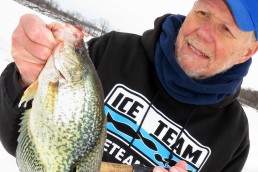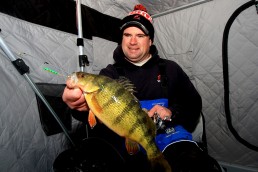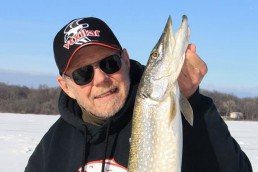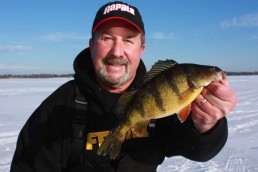Following the Panfish Bite
SHARE THIS POST
It is just like clockwork—a surefire guarantee: Seasons change, and along with this change, we experience winter. However, here are the keys to following the panfish bite.
Winter is a time of hibernation and lackluster activity for some. Others embrace the change by taking advantage of the opportunities winter has to offer. One of those opportunities is ice fishing.
I am one of a growing number of outdoor enthusiasts that enjoy ice fishing. For me, ice fishing is all about chasing panfish. And just like the seasons changing, panfish bites change as winter marches on.
Change
In order to experience continued panfish success in the frozen water period, it is imperative to understand that their honey hole may lose its appeal partway through the season. Meanwhile, other locations that were void of fish early often improve as the winter wears on.
Many factors can contribute to this migrating fish bite. These include light penetration, dying or growing weeds, low oxygen levels and availability of food.
I have a number of locations that I fish early in the season that are good for just a few weeks. Once the bite starts to dwindle, it is time to move on.
Several of my early spots are weed-oriented locations. When the weeds start to die off and the aggressive fish are caught, the activity will totally die, as the panfish move to deeper haunts.
Too many times, I see anglers continue to pound these unproductive spots. They will catch a fish or two, but the numbers are not going to be there. (It is important to note that panfish will sometimes move back into these early-ice areas during the late-ice period.)
Once the early bite is over, I like to concentrate my efforts on deep basin fishing. When I say deep, it is all relative to the lake. On some lake, deep may be 20 feet, while for others, it is over 40. I will admit that I don’t like fishing in 40 feet of water. But if that is where the fish are, that is where I am going to be.
Are you enjoying this post?
You can be among the first to get the latest info on where to go, what to use and how to use it!
Mix It Up
During a typical season, I will easily fish 15 to 20 different lakes. Keeping track of where to go on these lakes can be tricky.
I am a big fan of the Navionics map that I have on my phone. I always drop a pin on places where I catch fish, as the same spots are often good year after year. Dropping a pin is critical, as it is impossible to tell exactly where I was when I caught fish on a lake two years prior.
I also have a 12-volt connector in my truck, so I can run my Lowrance unit from my boat in my truck. Again, I have icons placed where I have caught fish in the past. There are times when I save a location in the summer that I feel needs to be checked in the winter. This is especially true of cabbage weed beds.
Understanding the fact that it is rare to be able to fish the same location all winter is critical for continued panfish success. Fish move as conditions change. In some situations, the better quality fish are simply caught and gone.
Following the panfish bite is not rocket science, but it does take effort and a willingness to search and learn the patterns. Once this is figured out and locations are logged, winter success will increase.
Become a MidWest Outdoors Insider here!
MWO
SHARE THIS POST
Did you enjoy this post?
You can be among the first to get the latest info on where to go, what to use and how to use it!
Jerry Carlson
Jerry Carlson began his writing career in 1987 and covers both hunting and fishing topics. He currently writes for numerous media outlets and does radio work with WJON AM in St. Cloud, Minn. He has authored a book called Details for Locating and Catching Fish.



